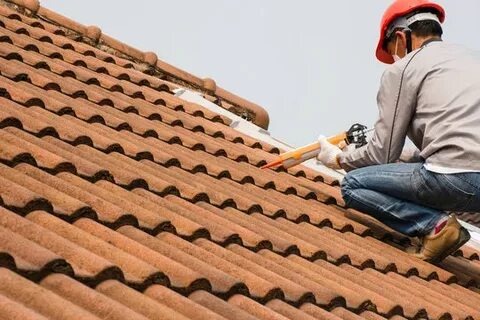Introduction
Your home’s foundation is literally what everything else rests on. When it’s compromised, the damage can ripple throughout your structure — affecting floors, walls, and even your plumbing. One of the leading and most avoidable causes of foundation issues.
Whether from rainfall, melting snow, or roof runoff, water that isn’t properly channeled away from your home can seep into the soil surrounding your foundation. Over time, this saturation leads to soil expansion and contraction, cracks in the concrete, and uneven settling.
Fortunately, preventing these costly issues is within your control. Below are the top ways smart homeowners can avoid foundation problems caused by water drainage issues.
Top Ways to Prevent Foundation Problems Caused by Poor Water Drainage
1. Keep Your Gutters Clean and Functional
Gutters play a critical role in routing water away from your home’s foundation. When they’re clogged or damaged, water spills over the edge and pools around the base of your house. This excess moisture can quickly lead to foundation cracks, leaks, or even basement flooding.
Routine gutter maintenance is one of the simplest yet most effective steps you can take. This includes removing leaves and debris, securing loose sections, and checking for leaks or sagging areas. Especially during fall and spring, your gutters should be inspected and cleared regularly.
If you’re unsure how to go about it or want professional help, you’ve likely already searched for Gutter Services near me to find a trusted local provider. A professional gutter technician can clean, repair, and even upgrade your system to ensure proper water flow all year long.
2. Grade Your Landscape Away from the House
The ground around your home should slope away from the foundation not toward it. This grading allows rainwater to naturally flow away instead of settling along the base of your structure.
If the soil around your home is flat or slopes toward the house, it may be necessary to regrade the area. Adding soil and shaping it with a proper pitch (ideally 6 inches over the first 10 feet) can greatly reduce water buildup and protect your foundation over time.
This is especially important in homes with older foundations or those located in high-rainfall regions.
3. Install and Maintain Downspout Extensions
Your downspouts should direct water at least 5 to 10 feet away from your foundation. If they end too close to the home, water will simply collect near the foundation walls — the exact problem you’re trying to avoid.
Installing downspout extensions or splash blocks is a cost-effective way to ensure runoff gets pushed far enough away. Be sure to check these extensions regularly to make sure they’re not blocked, damaged, or accidentally dislodged.
This small change can make a big difference in long-term foundation health.
4. Schedule Regular Roof Inspections
A roof in poor condition can allow rainwater to leak into walls, ceilings, and — eventually — your foundation. Cracked or missing shingles, deteriorated flashing, and broken rooflines can all lead to excess water spilling off areas of your roof in unintended ways.
This misdirected runoff often ends up accumulating near the base of your home, especially when paired with ineffective gutters.
Routine roof inspection services help catch these issues before they create downstream damage. A professional inspector will assess all areas of your roof, identify weak spots, and suggest proactive repairs. This is particularly important before rainy seasons or after a major storm.
Don’t wait for a visible leak to take action. Regular roof inspections are a key piece of the home protection puzzle — including foundation care.
5. Use a Sump Pump and Proper Drainage in Basements
If your property is prone to pooling water or you have a basement, a sump pump can be a critical tool. This system collects and redirects groundwater away from the foundation, preventing excessive pressure from building up around the walls.
In addition to installing a sump pump, make sure basement drains and floor slopes are working properly. If water is collecting and not draining correctly, it can slowly undermine your foundation’s integrity from the inside out.
6. Watch for Warning Signs Inside the Home
Even if you’re proactive about drainage, it’s important to stay alert for early signs of foundation trouble. Some red flags include:
- Cracks in interior walls or ceilings
- Doors and windows that suddenly stick or don’t align
- Uneven or sloping floors
- Gaps between walls and ceilings or floors
If you notice any of these symptoms, it’s time to take a closer look at your water drainage systems and possibly consult a foundation specialist. Catching issues early can save you from a much larger financial headache later.
7. Install a French Drain System if Necessary
In cases where water buildup is recurring or the landscape naturally directs water toward your home, installing a French drain may be a worthwhile investment. These underground drainage systems help channel water away from your foundation through a gravel-filled trench and perforated pipe.
While this is a more advanced solution, it’s often the best line of defense in high-risk areas. A professional contractor can assess your property and recommend whether a French drain or other grading solution is necessary.
Final Thoughts
Foundation issues are expensive, disruptive, and often completely preventable. By focusing on water management and drainage control, you can protect your home’s structural integrity for decades to come.
Simple steps like regular gutter cleaning, proper grading, and periodic roof inspection services can go a long way. And if you’re searching for reliable help, looking for Gutter Services is a great place to start — just be sure to choose experienced professionals who understand how water management ties directly into long-term foundation health.












